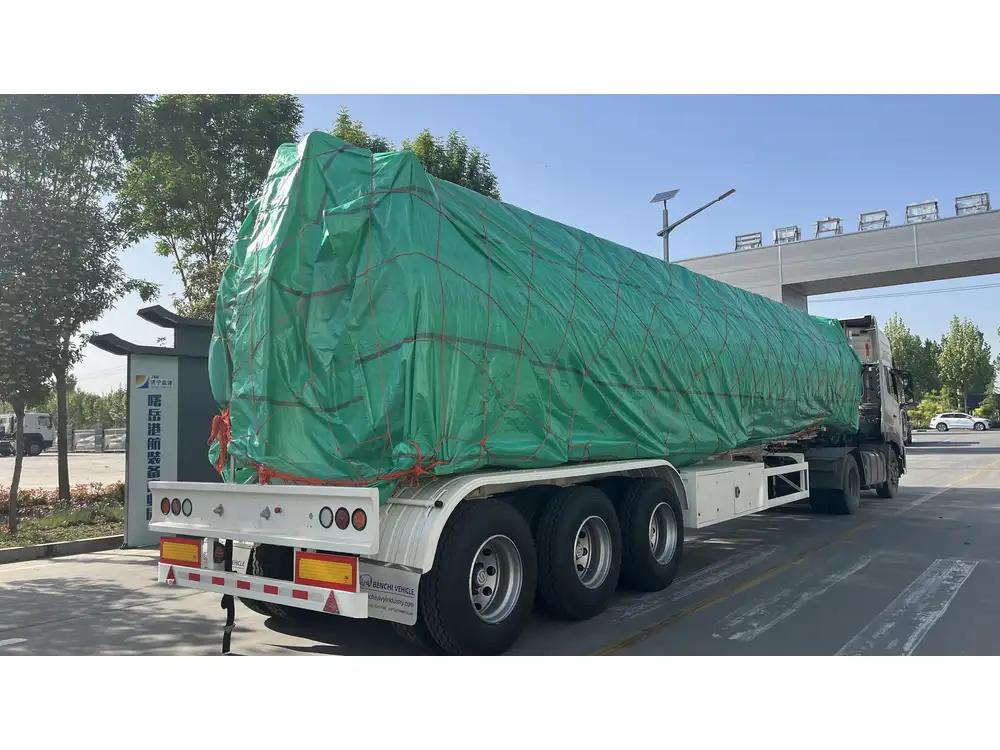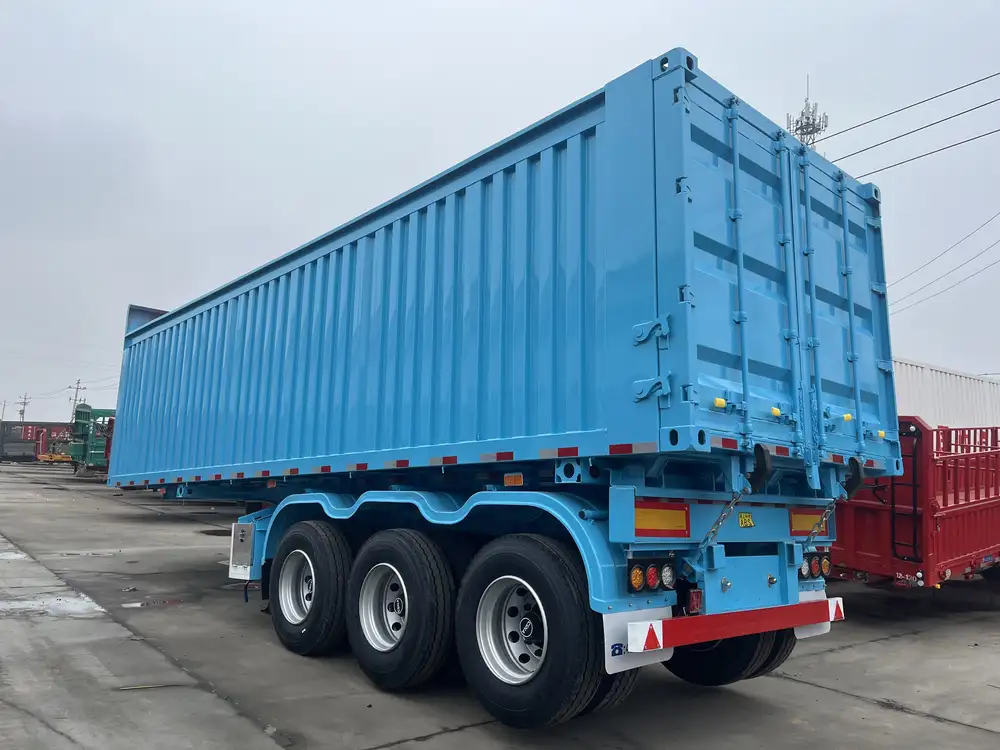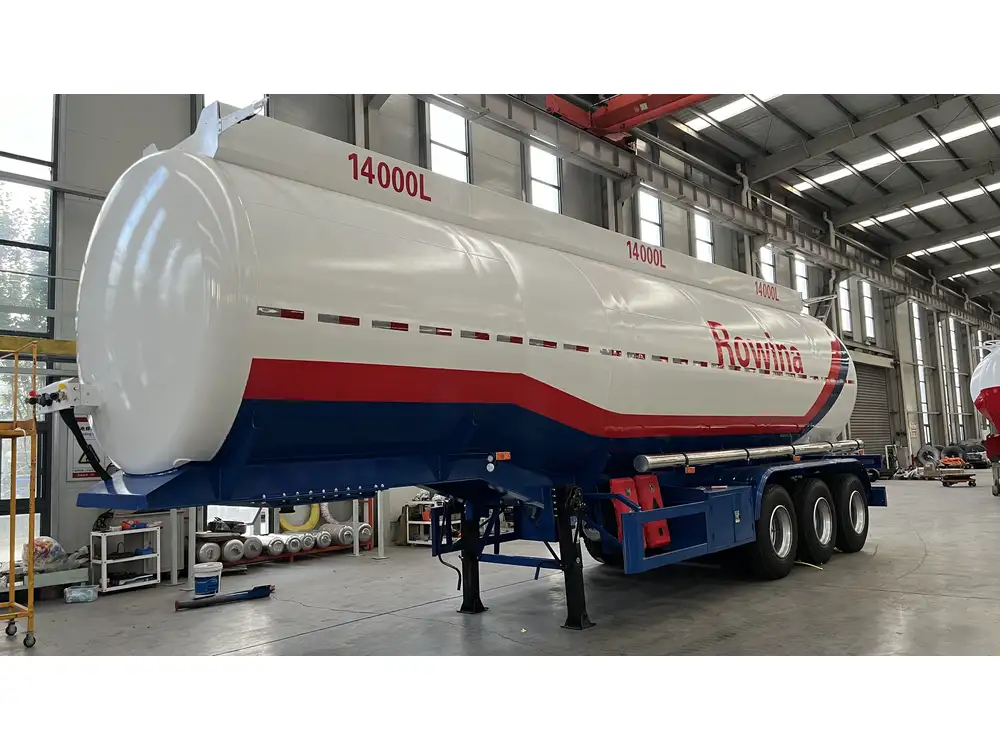In the transportation industry, the ability to understand weight limits and specifications related to semi-trailers is crucial. This detailed guide will dissect the various elements determining how much weight a semi-trailer can carry, including regulatory frameworks, design specifications, and real-world applications. As we navigate this topic, we will provide insights into the implications of weight limitations, challenges in compliance, and strategies for optimizing payload efficiency.
Understanding Semi-Trailer Weight Capacity
Federal Regulations: The Fundamental Framework
The Federal Motor Carrier Safety Administration (FMCSA) establishes weight limits for vehicles operating on highways in the United States. These regulations play a significant role in determining how much weight a semi-trailer can legally carry. The critical weight-related parameters include:
- Gross Vehicle Weight Rating (GVWR): This is the maximum weight a truck and trailer combination can safely handle, which includes the weight of the vehicle itself, cargo, and any additional equipment.
- Gross Combination Weight Rating (GCWR): This metric indicates the maximum weight of a vehicle and trailer combined, including the cargo.
- Axle Weight Limits: Regulations dictate the maximum allowable weight per axle. For example, the federal limit for a single axle is typically 20,000 pounds, while tandem axles can carry up to 34,000 pounds.
These federal guidelines are crucial for ensuring safety on the roads and preventing damage to infrastructure.

State Regulations: Variances and Considerations
While federal regulations provide a baseline, individual states can impose stricter limits. This variability can influence the maximum weight a semi-trailer can carry within each state. For instance:
| State | Single Axle Limit (lbs) | Tandem Axle Limit (lbs) | GVWR (lbs) |
|---|---|---|---|
| California | 20,000 | 34,000 | 80,000 |
| Texas | 20,000 | 34,000 | 80,000 |
| New York | 22,400 | 34,000 | 80,000 |
| Florida | 20,000 | 34,000 | 80,000 |
State regulations can also influence special permits and exemptions for certain cargo, such as agricultural products, heavy machinery, or oversized loads, allowing for increased weight limits under specific circumstances.
Trailer Types and Their Capacities
Not all semi-trailers are created equal. The design of a semi-trailer, including its type, dimensions, and the materials used, has a major impact on its weight-carrying capacity.
Common Semi-Trailer Types
Flatbed Trailers:
- Capacity: Around 48,000 to 53,000 pounds
- Application: Ideal for loads that don’t require weather protection, such as construction materials, machinery, and large items.
Dry Van Trailers:
- Capacity: Typically between 45,000 and 50,000 pounds
- Application: Designed for hauling goods that need to be sheltered from weather conditions, such as electronics, furniture, and food products.
Reefer Trailers:
- Capacity: Generally around 42,000 to 45,000 pounds
- Application: Equipped for temperature-sensitive cargo like perishable foods and pharmaceuticals.
Specialty Trailers:
- Capacity: Varies widely (can exceed 50,000 pounds)
- Application: Custom-designed trailers, such as lowboys for heavy machinery or tankers for liquids, have specialized weight capacities.
By understanding the diverse range of semi-trailer types, operators can select the best fit for their transport needs while maximizing payload efficiency.

Load Distribution: The Key to Safe Transport
Equally important to understanding the weight capacity is recognizing the significance of load distribution. Improperly distributed weight can lead to increased risks, including vehicle instability, tire blowouts, and enhanced wear on brakes and suspension systems.
Best Practices for Load Distribution
- Center the Load: Ensure the cargo is evenly distributed across the trailer to avoid excessive weight on any single axle.
- Use Load Bars and Straps: Secure the cargo correctly to prevent shifting during transport.
- Conduct Pre-Trip Inspections: Regularly check trailer condition and cargo security before embarking on a journey.
The Weight of Compliance: Challenges and Strategies
Meeting weight limits is not only a matter of regulatory compliance but also a substantive challenge that requires meticulous planning and execution. The consequences of overweight violations can be severe, including:
- Fines and Penalties: Significant costs associated with non-compliance, which can accumulate rapidly.
- Increased Wear and Tear: Overloading leads to faster deterioration of vehicle components, resulting in higher maintenance costs.
- Safety Risks: An improperly loaded or overloaded semi-trailer poses a substantial threat to the driver and other road users.

Strategies for Optimizing Payload Efficiency
To maximize weight capacity while ensuring compliance, manufacturers and hauliers can adopt the following strategies:
- Utilize Lightweight Materials: Investing in lightweight components can lead to a better weight-to-cargo ratio.
- Optimize Load Planning: Leveraging software tools to evaluate cargo distributions can enhance overall efficiency.
- Adhere to Local Regulations: Stay informed about state-specific rules and exemptions which may offer opportunities for increasing payloads.
The Role of Technology in Weight Monitoring
Advancements in technology are revolutionizing how operators manage weight compliance. Innovative solutions include:
Weigh-In-Motion Systems
These systems allow for real-time weight measurements while vehicles are in motion, minimizing the need for stops at weigh stations. By integrating this technology, operators can optimize routes and prevent legal infractions.

Automated Load Monitoring
Smart load monitoring systems integrated within trailers provide data on load weight and distribution. This mirrors the importance of maintaining appropriate weight limits continuously throughout transport.
Future Trends: The Evolution of Weight Limits in Transportation
As technology and regulations evolve, so too will the expectations for semi-trailer weight limits. Key trends to watch for include:
Evolving Regulatory Frameworks
Anticipate new regulations focusing on environmental impact, with discussions on sustainable transport practices potentially influencing weight capacities and specifications.

Advanced Trailer Designs
Innovations in design, including modular trailers or those utilizing adaptive materials, may expand carrying capacities without compromising safety.
Adoption of Electric and Autonomous Trucks
The rise of electric trucks and autonomous vehicles could lead to changes in weight limits and new operational efficiencies, with a focus on reducing overall vehicle emissions.
Conclusion: Striking a Balance Between Capacity and Safety
In conclusion, understanding how much weight a semi-trailer can carry is a multifaceted issue influenced by regulations, trailer design, load distribution, and ongoing technological developments. By navigating this landscape with knowledge and careful planning, hauliers can ensure compliance, optimize cargo loads, and focus on safety. Making informed decisions today will prepare operators for the dynamic changes of tomorrow’s transport industry, ultimately driving efficiency and profitability in your operations.
Leverage this knowledge for strategic transport solutions while upholding safety and regulatory standards, fostering sustainable growth in the semi-trailer manufacturing sector, and enabling successful freight operations that adhere to the evolving demands of the industry.



